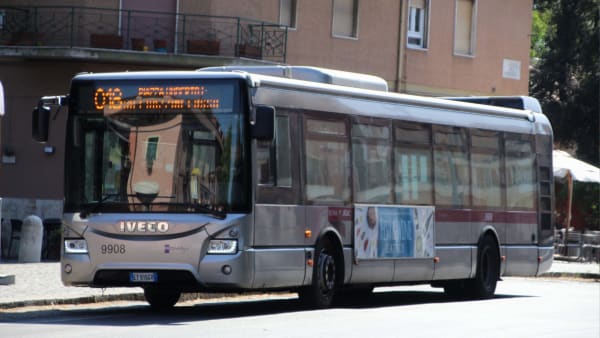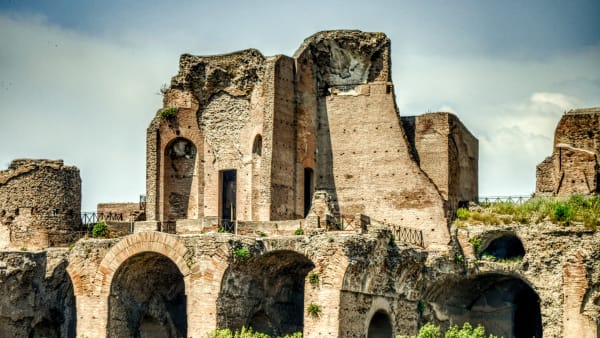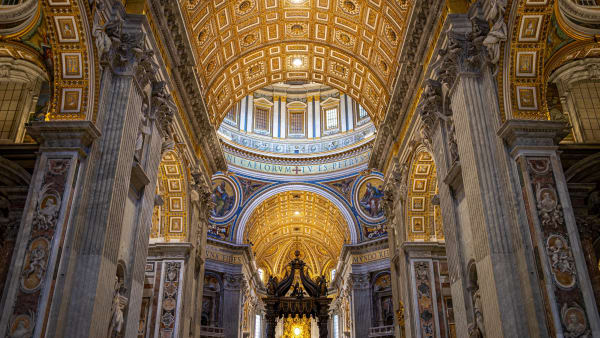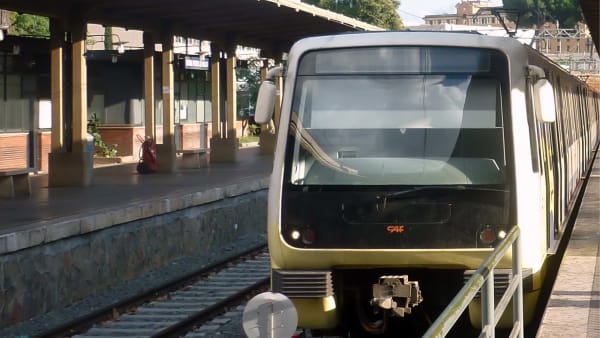Brief history
Brief history
The construction of this monument occupied about half a century of Italian history, and it involved numerous projects and just as many critics. These were mostly concerned with the several expropriations and demolitions needed to make room for such a big monument. Here you will find out about its history.
Contemporary Age (1789 - present)
The Vittoriano was commissioned by the Italian government. In 1878, after the death of King Victor Emmanuel II, the Prime Minister decided to build a monument celebrating the late king and the unification of Italy.
The first national competition for the construction of the monument was called in 1880. During the same year, the Royal Commission for the Monument to Victor Emmanuel II was set up.
The public funds for the construction of the monument amounted to approximately 8 million lire, to which would be added the money sent by Italian citizens living abroad. The competition was won by Frenchman Nenot, but his project was never implemented.
Several complaints arose about the idea of letting a foreign artist work on such a patriotic monument. It also seems that the initial project was not so different from an old project by the same architect for the new Sorbonne building. Moreover, the occupation of Tunisia by France did not improve the architect’s popularity.
In the following international call for proposals (1882), the architects also needed to specify the intended location as well as the specific construction characteristics. There was a detailed list of instructions for the project hand-in.
The Royal Committee approved the idea of building a monument on the Campidoglio. This would have made the Vittoriano - aside from a celebration of the first king of Italy - also a symbol of Rome the Capital, the true counterpart of Papal Rome (represented by Saint Peter’s Basilica) and Imperial Rome (represented by the Colosseum).
The instructions foresaw a complex to be erected on the north side of the Campidoglio Hill, aligned with Via del Corso. It also included a bronze statue of the king, an architectural backdrop of at least 30 meters in length and 29 in height (the shape was to be determined by the architect, as long as it covered the buildings in the back), and the Santa Maria in Ara Coeli Church to the side.
The participants in the call for proposals, which closed on 9 February 1884, were given a year to hand in their projects. The total of the projects handed in was ninety-eight, but the committee was uncertain between the proposals made by Bruno Schmitz, Manfredo Manfredi, and Giuseppe Sacconi. As a result, a third competition was called, limiting the proposals to these three. The call for proposals was closed on 24 June 1884 and Giuseppe Sacconi, a young architect from the Italian region of Marche, was announced the winner.
Sacconi’s project was inspired by some of the great classic complexes, like the Pergamon Altar and the Sanctuary of Fortuna Primigenia. The monument thus needed to be a large open space, conceived as a forum open to the public in an elevated square in the heart of Imperial Rome. It would be the symbol of a unified Italy, the direct descendant of the Rome of Caesars and Popes.
To build the Vittoriano, as mentioned in our article about Piazza Venezia, numerous expropriations and demolitions were necessary, especially in the area adjacent to the Campidoglio. These were carried out thanks to a program by then PM, Agostino Depretis.
This choice caused severe discontent in some of the members of the committee. After it became clear that the construction of the Vittoriano would compromise some ancient Roman monuments of the area, such as the Sanatorio Palace and the Tabularium, some members even got so far as to resign.
Other constructions to be demolished for the same reason were the three cloisters of the Ara Coeli Convent, a historic monastic complex of medieval origin, the Tower of Paul III, a fortified villa from the 16th century, and the flyover connecting with Palazzo Venezia, known as St Mark’s Arch.
During the second call for proposals, some additions were made. These were a grand marble monument adorned with ascending steps, next to the Ara Coeli Basilica, as well as a colonnade and statue of Victor Emmanuel II sitting on a throne. This piece would be placed at the center of the complex.
On 22 March 1885, the first stone of the monument was laid. It became immediately clear that it would be impossible to lay the foundations of such a building on clay soil. Sacconi was thus forced to modify the project, and the costs went up from the initial 9 million liras to almost 27.
The construction of the Vittoriano took almost half a century, with the first stone being laid in 1885, and the bronze chariots on the propylaea in 1927. The building comprises a large stairway that leads to the Altar of the Fatherland, splitting into two flights that go behind the Altar. These converge behind the king’s statue and open up again to lead to a wide shelf dominated by the exedra portico crowning the building.
Sacconi decided to propose the themes of the Fatherland and Unity, representing them allegorically and geographically. At the sides of the staircase, there are two allegorical groups in gilded bronze, representing Thought and Action. Before them are the statues representing the Tyrrhenian and Adriatic Seas. Above, starting from the left we can find the groups of Strength, Concord, Sacrifice, and Law.
Next are the Winged Lions and the Victories. On the first level is the Altar of the Fatherland (built in 1921), with the Tomb of the Unknown Soldier, the Statue of the Goddess Rome, towards which the triumphal processions of Labour (left) and Love of the Fatherland (right) converge.
Up high we can find the monument of Victor Emmanuel II, in gilded bronze, on a base with reliefs of the cities of Italy, by Eugenio Maccagnani. On the last level are the areas of the Italian cities freed during the war (1915-18) and a rock from Monte Grappa. Above there is a portico with sixteen columns, and in the attic are the statues of the Italian regions. On the propylaeums are the chariots of Unity (on the left) and that of Liberty (on the right).
The monument was made of Botticino marble, instead of travertine as originally planned. Inside we can find the showrooms dedicated to the history of the monument itself, to the Shrine of the Flags (Sacrario delle bandiere), and the Risorgimento Central Museum (Museo centrale del Risorgimento), which traces the steps that brought Italy to its unification and hosts interesting exhibits. Risorgimento (Resurgence, in English) is the Italian term used to refer to the period and cultural movement surrounding the Unification of Italy, not to be confused with the term Renaissance, Rinascimento in Italian.
In front of the Adriatico fountain is the tomb of Caius Publicus Bibulus (plebeian aedile). The monument, of which only part of the facade remains, is located in a flowerbed on the left side of the Vittoriano. It was spared from demolition for the construction of the latter. It is a funerary monument, dating back to the first half of the 2nd century BC, now partly buried.
After Sacconi’s death in 1905, the works continued under Gaetano Koch, Manfredo Manfredi and Pio Piacentini’s direction. Completion of the whole work would be achieved much later. Fontana and Bartolini’s chariots would be laid between 1924 and 1927, while the last adjustments were made in 1935.
The monumental complex was inaugurated by Victor Emmanuel III on 2 June 1911, on the occasion of the International Exposition celebrating the 50th anniversary of Italian Unity. The crowd was massive, and many public figures participated in the celebration. Among these was queen Elena, the queen mother Margherita of Savoy, chairman of the council Giovanni Giolitti, the six thousand mayors of Italy, the unification war veterans, and three thousand students from various Roman schools.
From its inauguration, the monument has hosted important celebrations, and this has cemented its function as a symbol of national identity. The main events have always been the celebration of Italian Unity (25 April), Republic Day (2 June), and National Unity and Armed Forces Day (4 November).
On these occasions, the President of the Italian Republic and the highest offices of the State still pay homage to the Church of the Unknown Soldier, in memory of the Italian dead and missing at war.
In the aftermath of the war, having been used as a stage by the Fascist Regime, the Monument was the object of deep critical misfortune, which lasted for the following decades. On 12 December 1969 an assassination attempt was made (detailed in the Curiosities section of this article) which led to the decision to close the monument to the public.
After the closure of almost 30 years, from 1969 to 1997, the entire Vittoriano complex was re-evaluated and began to re-enter the lives of citizens.
Carlo Azeglio Ciampi, then President of the Republic, made the re-evaluation of the Monument one of the key points in his policy of re-appropriation of places and symbols of the country’s history, in the name of national pacification. After careful restoration work, the Monument was reopened to the public on 23 September 2000, in conjunction with the school year’s opening ceremony.
Today visitors can access 90% of the Vittoriano, which would have been impossible only a few years ago. One of the strong features of the monument is the lifts, inaugurated in 2007, which allow for an incredible 360° view of the city. They can be accessed in Terrazza Italia, at the back of the building.
The Polo Museale del Lazio (an institute managed by the Ministry of Cultural Heritage and Activities ) is currently in charge of maintaining the Vittoriano. About a third of the monument, which houses the Shrine of the Flags, is under the jurisdiction of the Defence Ministry.
Every year, the monument welcomes about 3 million people, making it one of the most visited in Italy. The Shrine of the Flags registered about 1 million visitors. The panoramic lifts, the only part of the monument to have an entrance fee, generates about 2,700,000 euros, with about 500,000 visitors.















